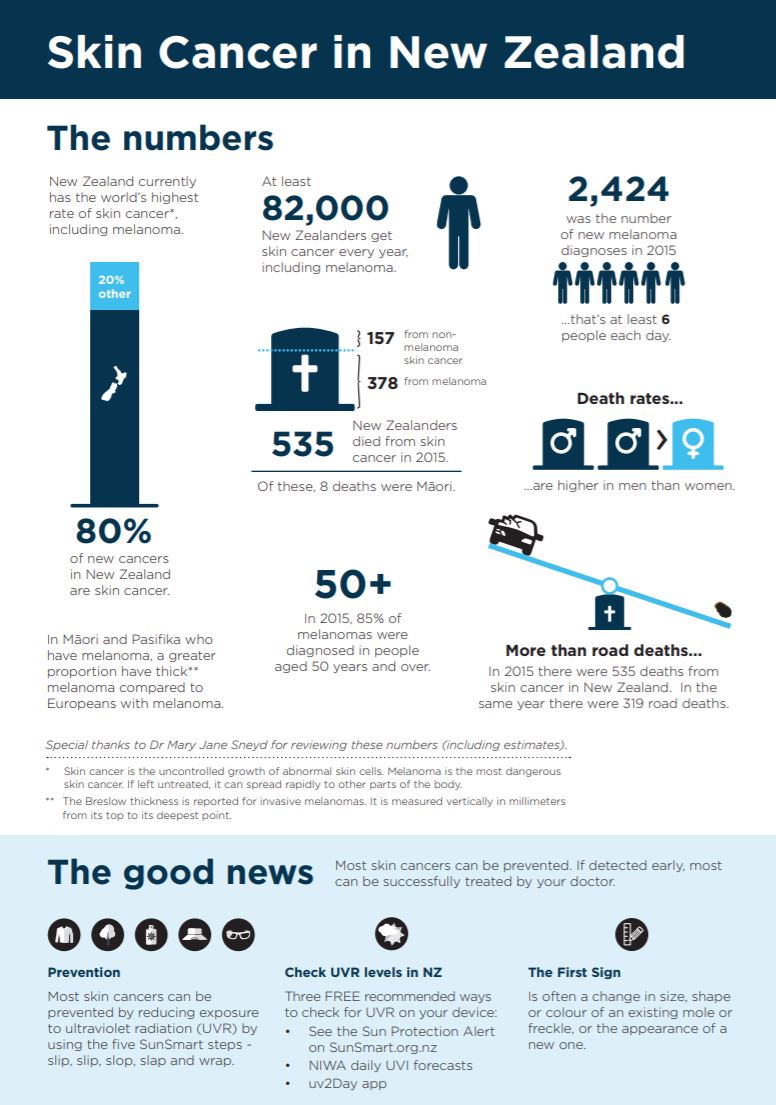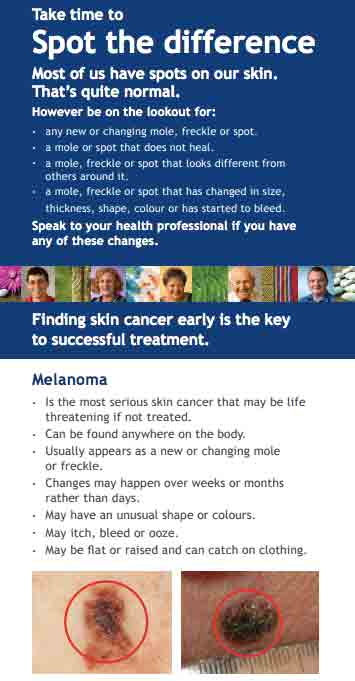Unlike many other forms of cancer, skin cancer is often visible, making it easier to detect in the early stages. Early detection is the key to successful treatment.
Treatment depends on the type, size, location and number of skin cancers, and whether the cancer has spread to other parts of your body.
Treatment options for superficial skin cancers include:
Surgery
Most skin cancers are treated surgically (cutting out the cancer). This is done using a local anaesthetic to numb your skin. Surgical techniques include:
- excision biopsy
- Mohs surgery.
Excision biopsy
This is where a skin lesion is completely cut out. It is impossible to fully excise a skin lesion without leaving some scarring. The most common type of excision is an elliptical excision. This is designed so that the scar runs parallel with your skin creases, making it less visible.
There will also be a margin of normal surrounding tissue cut out. How wide the margin is depends on the type of cancer and how deep or aggressive it is. The tissue cut out is then sent to the laboratory for analysis by a pathologist.
After the pathologist has confirmed the lesion is a skin cancer, a wider incision (further surgery to remove more of the surrounding skin from the wound) is sometimes needed.
If a large amount of skin needs to be removed, or it is in a tricky area, a skin graft may be needed to cover the area.
Mohs surgery
This is a specialised, more intensive form of surgery for skin cancer, also called Mohs micrographic surgery (MMS). It uses a microscope to help check that the deep roots of the cancer have been removed.
It can be used to remove large, deep or recurring cancers. It is also often used for cancers in areas that are difficult to treat by other surgical methods, such as cancers near your eye.
Cryotherapy
This is the use of extreme cold (such as liquid nitrogen) to treat pre-cancerous skin conditions (eg, solar keratoses) and some small skin cancers. Liquid nitrogen is applied to the tumour to freeze and kill the abnormal cells. Some pain and redness may occur afterwards, and a blister may develop on the treated area. There may be a white mark or scar from the treatment.
Topical therapy
Topical therapy means applying a cream to the skin cancer.
Fluorouracil cream
Fluorouracil cream can be applied directly to your skin once or twice a day for several weeks. The area will become red, then there will be blistering, peeling or cracking. The skin settles and heals once the treatment has finished.
Imiquimod cream
Imiquimod can be used to treat pre-cancerous lesions and superficial basal cell carcenomas (BCCs). It is known as an immunomodifier because it stimulates your immune system to recognise and destroy cancer cells. It is easy to use as it is a cream applied to your skin, usually several times a week, for a period of some weeks.
It tends to cause inflammation and redness, itching and burning on the treated area. Some people may also experience flu-like symptoms such as headaches and fatigue during treatment. Side effects are generally mild, but if they are severe, stop using the cream and see your doctor.
Photodynamic therapy
This is a two-step process using a light source (such as a laser) and a photsensitising cream. In the first step, the skin area with the cancer is scraped lightly and a cream is applied to make the cancer cells sensitive to light.
In the second step, a few hours later, the area is exposed to a light source, so the cancer cells can be destroyed. If you feel any pain, you will be given a local anaesthetic.
Radiotherapy
Radiotherapy is an option for hard-to-treat skin cancer, such as cancer on your eyelids or nose, or if you are medically unfit for any type of surgery. Radiation treatment uses high-energy x-rays to destroy cancer cells.
Treatments usually occur for a short time daily or weekly. The area may become red and sore, and there may be changes in skin colour and/or texture in the long term.
Lasers
Lasers may also be used in some cases to treat skin cancers and growths. Also known a laser ablation, it uses a high-intensity beam of light to destroy cancer cells. It may be used if you have actinic keratosis, squamous cell carcinoma in situ or basal cell carcinomas on your skin’s surface only.
Laser surgery is also used for people who have lesions on sensitive locations, such as your eyelids or face, as well as for people who have a weakened immune system and so surgery is not a good option.
Apps reviewed by Healthify
You may find it useful to look at some Skin care (dermatology) apps.









